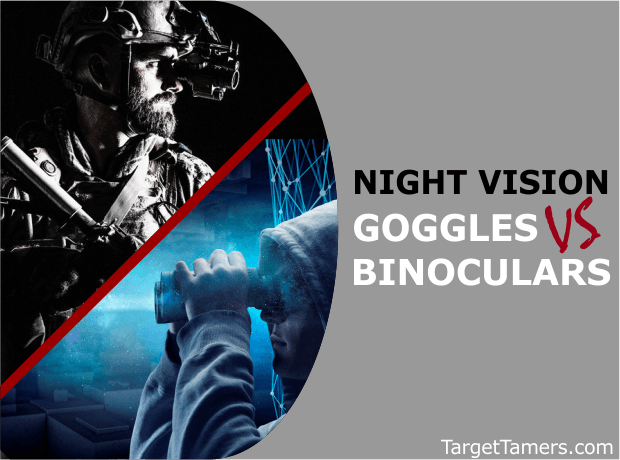
Goggles and binoculars. . . Are they identical devices?
Sometimes yes, and sometimes, no.
There are different types of night vision goggles, and night vision binoculars can come with features that are not compatible for use as goggles.
How can you tell the differences between the two? That's what we strive to answer for you in our comprehensive comparison guide.
Learn here about what makes a good pair of goggles and when binoculars are the better option.
Night Vision Goggles
When we watch action-packed movies with soldiers and SWAT teams stealthily completing a covert mission in the dead of night, we automatically associate Night Vision goggles with their tactical outfit.
But, have you ever really stopped to pay attention to what those goggles are and how night vision goggles work?
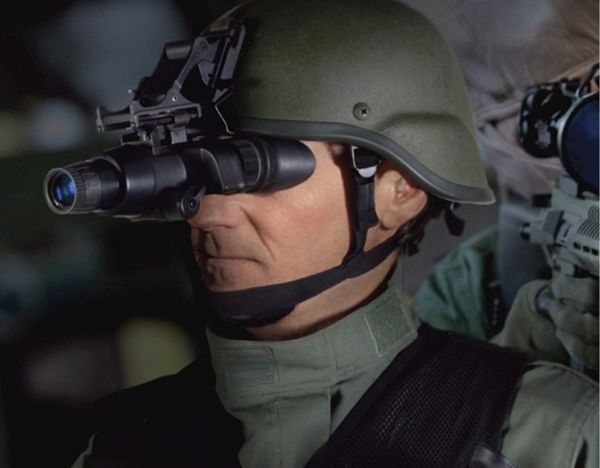
"Night Vision Goggles" is a catch-all term for the following night-vision devices:
- Monoculars
- Binoculars
- Bioculars
Yes, binoculars and goggles can be the same thing, but in our comparison guide below, you'll learn in detail the differences and similarities between the two.
Pros & Cons of Night Vision Goggles
Pros:
- Multiple devices
- Head/helmet mounting
- Hands-free operation
- Wide FOV
- Availability
Cons:
- Lacks detail for long-range observation
Night Vision Binoculars
When we mention night vision binoculars, we're specifically identifying binoculars with magnification.
Binoculars have two eyepieces and two objective lenses. The dual IITs (Image Intensifier Tube) provide night vision, allowing for a greater input of data and light versus bioculars and monoculars.

Unlike daytime binoculars, night vision binoculars must be powered with a battery source, can be heavier and larger than their identical configuration counterparts (magnification & aperture configuration), and are significantly more expensive.
Pros & Cons of Night Vision Binoculars
Pros:
- Higher magnification
- Dual IITs
- Long-range observation
- Large apertures
- Used in multiple applications
Cons:
- Narrow FOV
Night Vision Binoculars VS Night Vision Goggles
In this guide, we compare goggles and binoculars in various applications and by their own respective features to see which type of optic would serve you best.
1. Cost/Budget
Regardless of the type of night-vision device you consider, night vision technology is expensive - significantly more than their daytime counterparts.
Both binoculars and goggles are available in any night vision generation class, and prices are usually indicative of its generation. True night vision with IITs will range between $500-$2000 for Gen 1. Gen 2 and higher devices will generally start around $3000. Digital night vision binoculars can be priced anywhere between $200-$2000. The cheapest options are usually digital night vision goggles or binoculars from generic brand manufacturers often sold under $500.
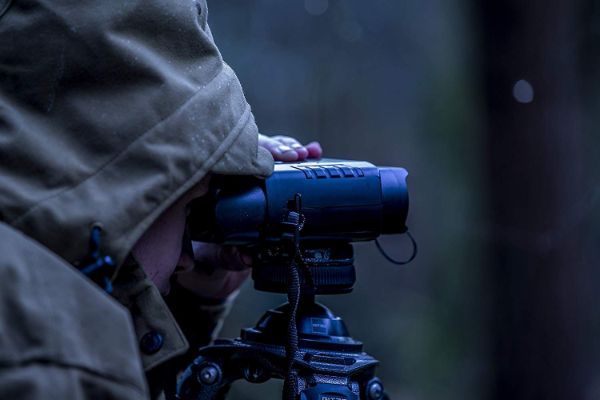
The second consideration that can affect cost is the type of device. Monoculars are cheaper than bioculars. Bioculars tend to be less expensive than binoculars, and binoculars usually top the charts in price due to their dual apertures and dual tubes.
If you're looking for the lowest prices of true night vision devices, goggles will provide a wider variety of price ranges. However, if you want the bottom-of-the-barrel price range no matter what, cheap day/night (digital) binocular systems may be the route to follow.
🏆 Winner: Tie
2. Availability
There is a wide range of available night vision binoculars in the market, but goggles win out because there's more of an opportunity to buy multiple types of night vision devices.
Between monoculars, bioculars, and goggle binoculars, this provides at least three categories to shop between possible options that can fit your activity-specific needs and budget.
🏆 Winner: Night Vision Goggles
3. Non-Magnification
This might just be the significant, number one difference that sets goggles and binoculars apart. For a night vision device to be used as goggles, it must be non-magnified with 1x power.
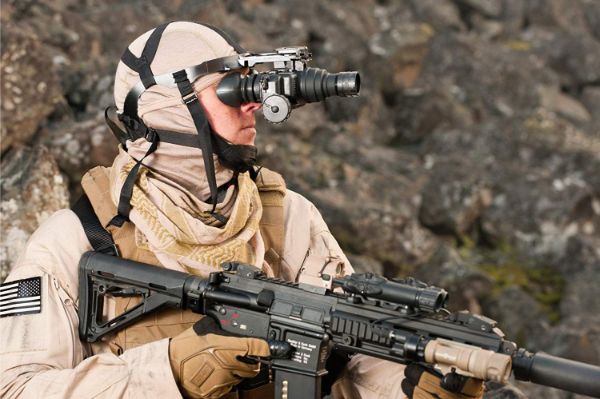
Because goggles are head/helmet mounted for hands-free operation and use while mobile, they must allow for vision that's as close to your natural vision as possible.
🏆 Winner: Night Vision Goggles
4. Magnification
Unlike goggles with their 1x magnification for close-range use, night vision binoculars are magnified with fixed 2x power and higher, usually up to 5x. This allows for detailed, long-range observation. Many may come with the ability to attach fixed power oculars for extra optical magnification.
Digital night vision binoculars will have two sets of magnification systems: optical and digital. The optical magnification is fixed and may be something like 2x. Digital magnification may be variable with 1x, 2x, or 4x, and some models are available of providing even higher digital power.
How does it work? The system will take the image you see at 2x optical power and essentially scale up the center of the image times the digital power, say 2x digital magnification. The image that you see at 2x will now be scaled up to seeing it at 4x power (2x optical multiplied by 2x digital magnification).
However, there are downsides to using digital magnification as pixels are stretched and interpolated to create the scaled-up image. Image quality may suffer with light loss, resolution loss, and lack of detail.
🏆 Winner: Night Vision Binoculars
5. Long-range Observation
Goggles are excellent devices for close-range and mobile use, but binoculars win the competition if you need long-range sight at night. Their higher magnification allows for closer views over longer distances, but it must be noted that high magnification doesn't always mean better sight.

If you put high magnification on a Gen 1 to see further while keeping the budget low, the loss of image quality will negate the magnification benefits. It's nearly always better to buy a generation higher to see more usable detail at long-range than it is to increase magnification. Higher generation night vision binoculars will be able to provide magnification benefits.
🏆 Winner: Night Vision Binoculars
6. Depth Perception
Being able to see a pothole several yards ahead with a magnified night vision binocular is helpful when you're scouting ahead, but while you're on the move, you need to be able to discern if you're about to step into it to avoid it. The depth perception that goggles provide for close-range use is one of its primary advantages over magnified binoculars.
With 1x goggles, you can move as you like - walk, run, and even drive vehicles and fly helicopters (of course, with training and expertise).
Because goggles are designed to be used hands-free, you have the ability of ultimate mobility so you can crawl through brush and tight spots, climb and scale buildings, and move about in unpredictable terrain. You can also read text and maps. All this is thanks to the non-magnified system of goggles.
Night vision monocular goggles provide excellent depth perception because one eye remains unaided leaving it free to use peripheral vision for situational awareness with its natural vision.
However, the dual tubes of night vision goggle binoculars provide exceptional depth perception because of its stereo-vision which means each eye is collecting data to form an image that are slightly different versus each eye sharing the same image from a single tube and single aperture device like a monocular or biocular.
Dual tube goggles aid in distance judgement and navigation.
🏆 Winner: Night Vision Goggles
7. Field of View
The naked eye can see a 190-degree FOV, so obviously, using optics of any kind will restrict this and night-vision gear does not present natural depth perception, but it can get close. Which does it better? Goggles or magnified binoculars?
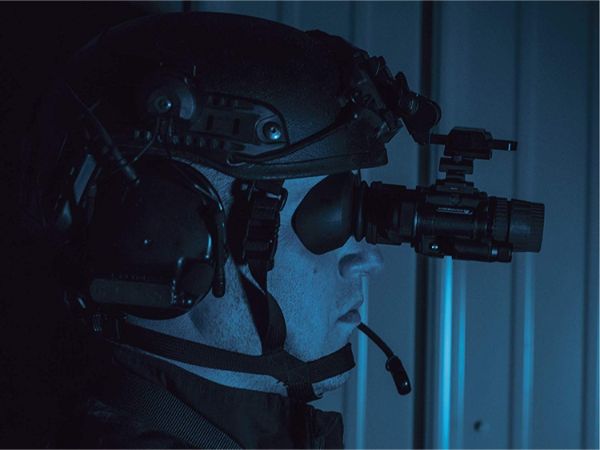
It's a no-brainer - goggles win with larger FOVs over binoculars. The higher magnification you have, the field of view will become narrower.
Night vision goggles can offer up to a 40-degree FOV while binoculars with their higher magnification will offer anywhere between 7-20 degrees FOV.
🏆 Winner: Night Vision Goggles
8. Hands-Free Operation
Night vision binoculars are magnified, large, and intended for long-range, stationary viewing, and so they will not be offered with goggle kits as they can't be used mounted to head/helmet gear for hands-free operation. High power binos can be mounted to a tripod.
Additional accessories such as neck straps or a binocular harness makes them portable and easier to use when you need them and drop them away when you don't.
A requirement for a night vision device to be used as goggles is its ability to be used as a hands-free optic. Whether it's a monocular, binocular, or biocular, it must be compatible for mounting with head/helmet gear.
Mounting systems and head straps will vary in adjustable features and how the optic can be moved about, ex. flipped-up, moved sideways, etc. If you're considering a goggle for hands-free use, make sure it comes with a goggle kit included in the buy.
Note, they are usually basic and entry-level systems. You may want to research upgraded goggle kits for additional adjustment and mounting features.
🏆 Winner: Night Vision Goggles
9. Size/Weight
Goggles are designed to be comfortable to wear around the head when mounted, and so they must be reasonably lightweight and compact. Monoculars are obviously the lightest device among goggles usually around 5" in length and anywhere from 8-16 oz in weight.
Biocular and binocular goggles can range in weight between 14-32 oz, and the heavy digital devices that require 4-8x AA batteries can tip the scales on the top end at 24 oz and more.
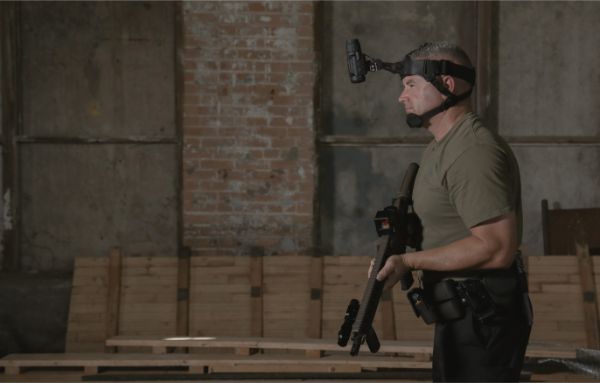
Night vision binoculars are not head mounted, so the demands for a lightweight, compact package isn't a top priority. However, they must be reasonably light enough to tote and stow away. The larger apertures, dual tubes, and higher magnification certainly adds its fair share to body dimensions. The longest binoculars we've seen are 9-12" in length, and the heavy ones can weigh up to 2.5 lbs. However, many will sport a length of around 7" and weigh approximately 1.5-2 lbs.
🏆 Winner: Night Vision Goggles
10. Night Vision Generation
There are classified night vision generation classes: 1, 2, 3, Filmless/Unfilmed, digital, and WPT (White Phosphor Technology). There's a lot of hoo-hah that we could throw out there to explain what each technology is, but what you really want to know is how far you can see, how bright and clear it is, how long will it last, and how much it costs.
Digital is not true night vision that lacks an IIT, has an active system, and allows for dual use in day and night. WPT tubes can be used in any generation night vision device. The iconic display of WPT tubes is black and white images that can be easier on the eyes and faster to use in law enforcement applications.
Gen 1 is the lowest end of night vision generations. It's more affordable, does the job, and is better than no night vision at all. There is a significant leap in quality and image brightness between Gen 1 and Gen 2. Gen 3 is highest class of night vision generations. Gen 4 is not an official generation class, but it usually indicates night vision technology called Filmless or Unfilmed tubes.
With each generation, quality, clarity, and brightness gets better and detection, identification, and recognition ranges get longer. Then, within each generation are grades that may indicate the level of quality or certain feature of an IIT.
With each upgrade in generation and grade, expect the cost to rise. Both goggles and binoculars are available in multiple night vision generations.
🏆 Winner: Tie
11. Hunting
This is a tough one because there are both benefits and drawbacks to goggles and binoculars for hunting. Goggles will allow you to scout, move, and always see in the dark during the hunt with hands-free operation. However, while binoculars are designed for more stationary use, they will allow you to stay further away without risk of giving up your position.
Both optics will provide an edge in the hunt, but neither will be able to provide you with sight through your scope which is what will make the shot. However, there are some smart options available like the ATN Binox 4K that is smart enough to communicate with your ATN scope or your daytime rifle scope with an app to provide the holdover you need.
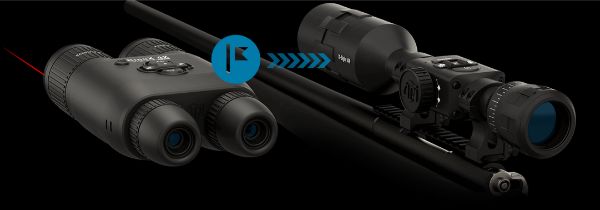
If a monocular goggle can be easily manipulated to be detached from your head mount and is compatible for use with your scope, you can mount it to your rifle system to give you sight to make the shot.
🏆 Winner: Tie
12. Surveillance
Goggles can provide hands-free surveillance, but they may not be comfortable nor have the battery life to last an entire shift for long sessions of viewing. Your profession or intended purpose may also govern whether goggles are for you. They may be ideal for close-range and restricted areas and hands-free operation will also allow for rapid employment of firearms.
However, binoculars allow you to see further away and stay covert if needed. Law enforcement, military snipers, and security guards can remain a good distance away and observe in secret. If close-quarter action is required, you likely won't need your optic at this point. A red dot on your weapon will aid to eliminate the threat.
🏆 Winner: Night Vision Binoculars
13. Tactical
What are the circumstances? For dynamic missions and raids where rapid movement, searching dark buildings, and close-quarter action is required, goggles should be your go-to night vision optic.
However, not all tactical situations demand fast-movement and close-range observation. Law enforcement and military personnel may appreciate the long-observation benefits of night vision binoculars for the same reasons it's beneficial for surveillance.
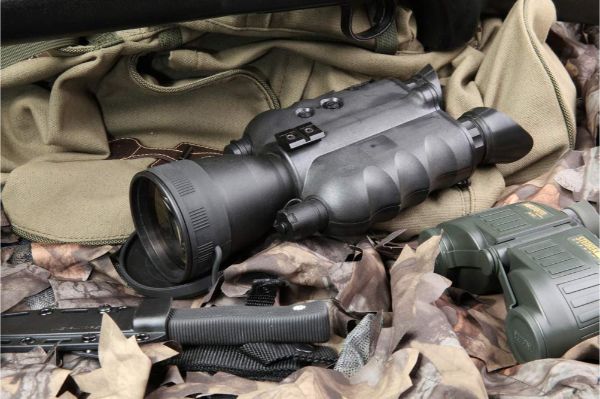
Regardless, only you can be the deciding factor on what you need for your applications.
🏆 Winner: Tie
Which is Best for You: Night Vision Binoculars or Goggles?
After all that, you should have more than a fair idea of whether goggles or binoculars are best for you. To recap, goggles provide hands-free operation, movement, and no magnification for greater depth perception and close-range use. If you plan on being mobile, expect to read and interpret maps, and wish to explore a wide availability of the best night vision goggles in the market, goggles are the way to.
The best night vision binoculars are for those who need longer ranges for observation and the detail that comes with those longer distances. They'll be employed while stationary or mounted to a tripod. Because you can be a distance away, there is less risk of being caught or spotted by the opposition or nighttime predators.
There's also an alternative to night vision and that's thermal vision. Unlike true night vision devices, thermal are active units that can function in both day and night. It records thermal energy to provide a display where you can detect living targets against the surroundings. However, the best thermal goggles and binoculars are even more expensive than night vision.
The Difference is in How You Use It
Whether it's goggles or binoculars, the night vision tech is the same. The differences will lie in how you intend to use the device.
Yes, there are feature differences that separates goggles from binoculars, and what may be a disadvantage to one will be the other's advantage in the field.
However, no device will be of benefit to you if you don't get some hands-on experience with it. It takes training and skill to make use of a goggles' full potential. It may take some steady hands to accurately determine details at long distances with binoculars. Unfortunately, we can't do that part for you.
So, compare, buy, and good luck to you!
Further Reading



